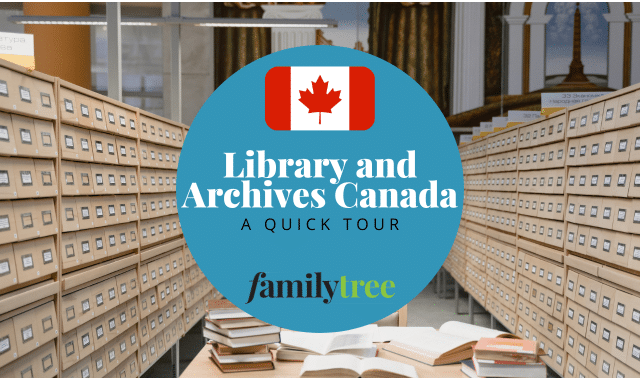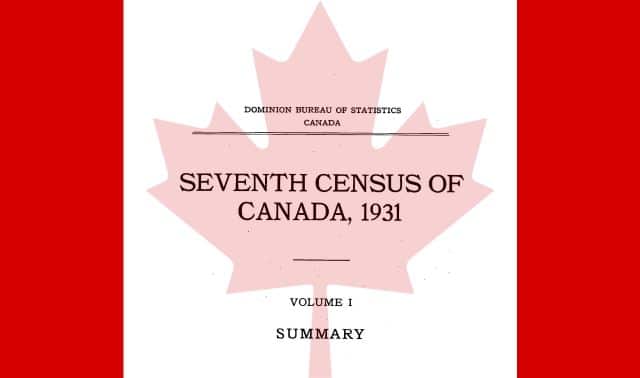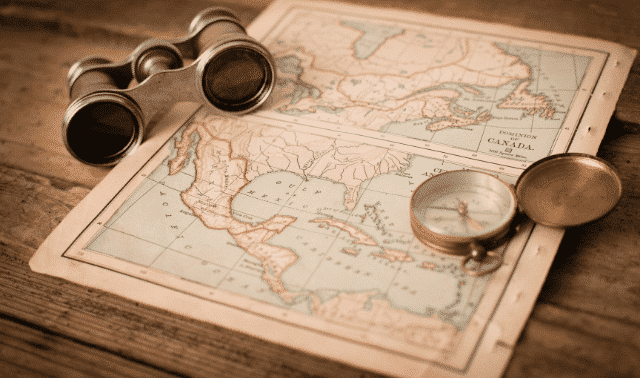Over the centuries, countless immigrants from the British Isles, Eastern Europe, Asia and, yes, even the United States, have answered the call to Canada. Some stayed to take jobs in cities or work on farms; others headed for Canada’s southern neighbor (maybe after sticking around awhile). It started with some 6,000 French immigrants who settled New France in the late the 17th century, and continues today as more than 200,000 arrive in Canada each year. Canada’s very character is defined by the successive waves of immigrants who settled its vast prairies and peopled its cities and towns.
After 1865, passenger lists served as official records of immigration. The Library and Archives Canada (LAC) holds surviving records from major ports on microfilm. View a list of ports covered, coverage dates and microfilm reel numbers here. The Family History Library (FHL) has copies of records covering 1900 to 1935, as well as earlier lists for Halifax and Quebec. Other Canadian libraries also may have film for various ports; see if your library can borrow film through interlibrary loan. Ancestry.com and Ancestry.ca have a name index and record images in a database called Canadian Passenger Lists 1865-1935. LAC has put record images from 1865 to 1935 online (they’re free). Image quality varies—if you can’t read one, the microfilm might be clearer.
But LAC’s name indexes cover only post-1925 records and city of Quebec records from 1865 to 1900 (Quebec lists include passengers who disembarked at Montreal between 1865 and 1921, because Montreal ports closed during winter when the St. Lawrence River froze). For other ports, you’ll have to search by the name of the ship, port of departure or arrival, or dates of departure or arrival.
Indexes to Quebec lists from 1865 to 1869 are on microfilm at LAC and the FHL (watch out for spelling variations). The free Nanaimo Family History Society Passenger Lists Indexing Project thus far covers Quebec ports (Montreal is included in the Port of Quebec) from Oct. 21, 1906, to Oct. 13, 1910. Scroll down to choose an alphabetical range and open each index page as a PDF.
If you can’t find your ancestor in an index, you can pore over the LAC’s online passenger lists by year. Search on your best guess of a year and a port, if you know it. Your results show passenger lists grouped by ship name. Click on a match, then View Image, and use the Page Navigation arrows to see all the pages in that list.
From 1919 to 1924, Form 30A replaced passenger lists except for those in transit to the United States. For each immigrant, the form reported such details as the ship name, departure date, arrival date and port, name, age, occupation, birthplace, race, citizenship, religion, destination and the name of the nearest relative in the country of origin. In a version of Form 30A used in 1919, children were typically included with the head of household, not on separate forms.
Until about 1922, officials were inconsistent in using the form: Some names may turn up on Form 30A and in passenger lists, and some may appear only on a list. These forms are on microfilm at LAC and the FHL, arranged in rough alphabetical order: Surnames starting with the same few letters are grouped. Some common names, such as Smith and Adams, are grouped separately. The LAC’s Form 30A Web page links to a list of microfilm reel numbers by surname. Note that most forms were microfilmed back to front.
Search for immigrants from 1925 to 1935 in the LAC’s online name index to more than 500,000 names. The original records aren’t online, but matches show a citation that’ll help you find the record on microfilm at the LAC and the FHL.
After 1935, passenger records are with Citizenship and Immigration Canada—see www.cic.gc.ca/english/index.asp for instructions on requesting copies.




